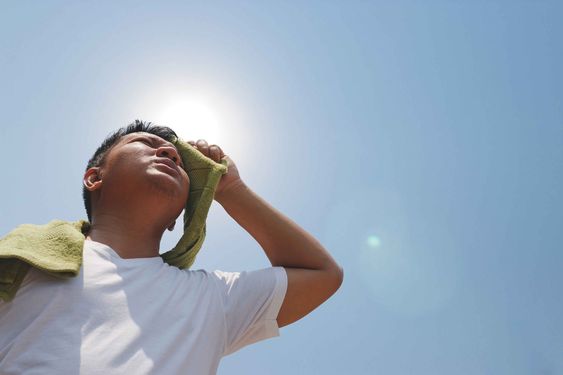Introduction
Sun-induced blisters, often referred to as sun blisters or sun poisoning, are a painful skin reaction caused by prolonged exposure to ultraviolet (UV) radiation from the sun. They manifest as fluid-filled sacs on the skin's surface, typically appearing red, inflamed, and tender to the touch. While anyone can experience sun blisters, individuals with fair skin, light hair, and a history of sunburns are more susceptible.

Sun blisters develop as a result of the skin's natural defense mechanism against excessive UV radiation. When exposed to intense sunlight, the skin produces melanin, a pigment that helps absorb UV rays and protect deeper layers. However, prolonged or intense exposure can overwhelm the skin's defenses, leading to cellular damage and inflammation. In response to this damage, the body releases histamine and other inflammatory mediators, causing fluid to accumulate between the skin layers, forming blisters.
Symptoms and Appearance
Sun blisters typically present as red, swollen areas of skin that are tender and painful to the touch. These blisters are filled with a clear fluid that may ooze if ruptured. In some cases, the blisters may be accompanied by other symptoms like:
- Itching: The affected area may feel itchy, but it's essential to avoid scratching to prevent infection.
- Burning Sensation: A burning or stinging sensation is common, especially when touched.
- Headache: Severe sunburns with blistering can lead to headaches, dizziness, or fever.
- Nausea and Vomiting: In extreme cases, individuals may experience nausea and vomiting, indicating severe sunburn.
Prevention and Treatment
Protecting your skin from excessive sun exposure is crucial in preventing sun blisters. Here are some essential tips:
- Apply Sunscreen: Choose a broad-spectrum sunscreen with an SPF of 30 or higher and apply liberally to all exposed skin, reapplying every two hours, especially after swimming or sweating.
- Seek Shade: Avoid prolonged sun exposure during peak hours when UV rays are strongest, typically between 10 a.m. and 4 p.m.
- Wear Protective Clothing: Cover up with lightweight, loose-fitting clothing, including long sleeves, pants, and wide-brimmed hats.
Treating sun blisters involves soothing the affected area and promoting healing:
- Cool Compress: Apply a cool compress or take cool baths to reduce inflammation and soothe the burning sensation.
- Hydration: Drink plenty of water to stay hydrated, as sunburn can lead to fluid loss.
- Over-the-Counter Pain Relief: Over-the-counter pain relievers like ibuprofen or acetaminophen can help alleviate pain and inflammation.
- Avoid Popping Blisters: Resist the urge to pop blisters, as this can increase the risk of infection.





